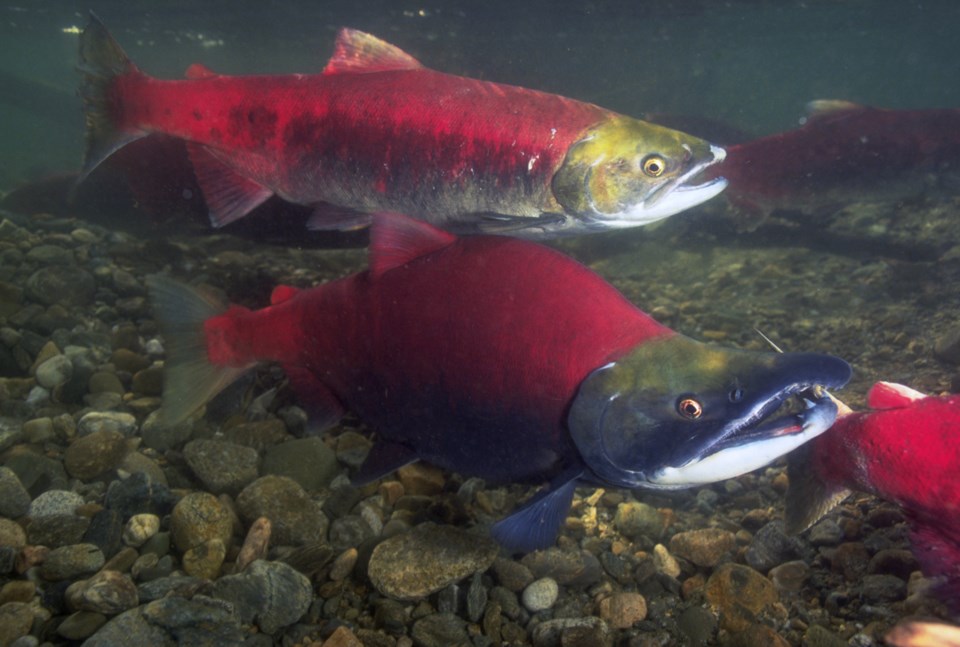Historically, female sockeye salmon have outnumbered male salmon when they reach their spawning grounds, but UBC research is showing that's no longer the case in the Fraser River.
The title of the publication captures the issue well: "Exceptionally high mortality of adult female salmon: a large-scale pattern and a conservation concern." It brought together data from nearly 20 studies of salmon.
Researchers have found that for every male salmon that doesn't return to the stream where it was born, two or three female salmon don't return.
“This is causing skewed sex ratios in their spawning grounds, something that has been observed in recent years,” says lead researcher Dr. Scott Hinch in a press release. “The implications on the health of Fraser River stocks are concerning, particularly as Pacific salmon populations in British Columbia have been declining over the past several decades.”
The trend has been observed in sockeye salmon in other systems, and in coho and chinook. The implication of declining salmon stock has environmental and economic implications.
Hinch and the researchers believe there are four reasons this is happening: depletion of energy, reduced cardiac capacity, stress and disease. For example, Female salmon are more likely to die due to environmental changes, like warmer or more turbulent water.
“Females have higher heart rates and smaller hearts than males leading to reduced cardiac capacity. Because female gonads are so large compared to males, they have to divert way more blood to them especially as the eggs are developing and this requires even more oxygen supply from the heart, so it’s likely that when the migration is difficult, females are not able to get enough oxygen to swim," says Hinch in the release.
They're now recommending some changes to help reverse the trend.
“A few years ago we studied the migration of sockeye salmon through the Seton River Dam and Fishway near Lillooet, B.C., and proposed that some small adjustments by BC Hydro to flows at this dam could improve salmon passage, which they did," Hinch says in the release. "Female salmon benefitted the most, showing us that basic research can be used to fine-tune our management actions to improve the survival of female salmon.”



